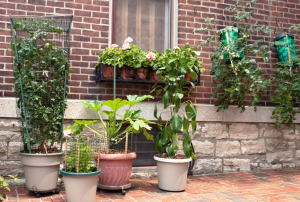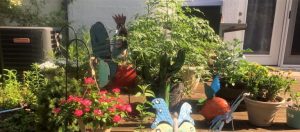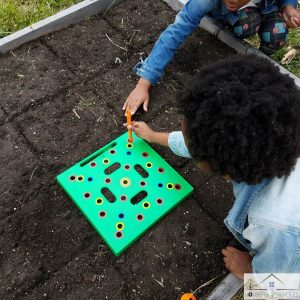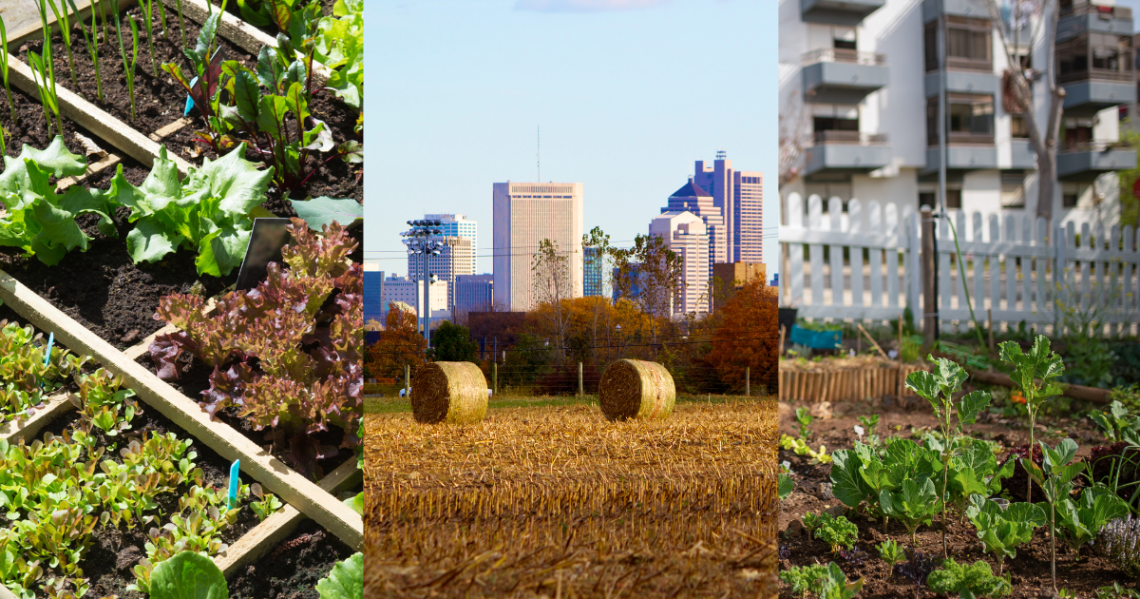
We’ve talked to some larger-scale city-farmers in our podcast. Both Natasha Nichols up in Chicago and Tony Tomato here in St. Louis farm in or very close to the city. But urban agriculture can mean a lot of things, even down to pots on a balcony.
Gardens: Long-Time Urban Ag

The gardens my parents and grandmom did for years were some of the earliest community gardens in Memphis. We would go to the garden plots laid out at Shelby Farms in the 1970s regularly to plant, pull weeds, water, gather fresh vegetables, and more.
It is great knowing that the gardens continue (at least they are still listed on the Shelby Farms site) and that in recent years they have been thriving! An article from the Memphis Flyer said that interest is gardening had been growing significantly:
“One morning, I saw 30 people,” Griffin says. “The economy probably plays a part. Plus, it seems cool this year to grow your own vegetables. Everywhere you look people are talking about it.”
Early last month, with a phalanx of elementary school children at her feet, first lady Michelle Obama started the first victory garden at the White House since Eleanor Roosevelt lived there. But the national attention to vegetable gardening was already under way.
Seed companies are flourishing, with the nation’s largest — W. Atlee Burpee — reporting a 25 to 30 percent spike in seed sales this year. The National Gardening Association says 19 percent more Americans plan to grow their own fruits and vegetables this year. Even the University of Memphis is getting in on the act, starting a pilot project to grow organic vegetables on its main campus.
The reasons are as varied as the seeds people plan to plant: the taste of fresh produce, the exercise, the fresh air, and the joy of seeing something grow.
More Urban Agriculture

The folks at Urban Harvest STL have some great numbers that help you understand the current look of the city — they point out there are “13,000 downtown residents, 88,000 downtown employees, 1 community garden, 30 urban farmers, 920 lbs of food grown in 2012, 182 lbs donated to charity and 860 volunteer hours.” I have to say, I look forward to seeing the numbers grow.
If you are interested in helping grow urban agriculture, what are you waiting for? There are projects popping up all over you can support or you could start one. The EPA has a list of steps to help people create a community garden or expand urban agriculture in their area as well as a page filled with urban agriculture success stories. The steps are:
- Survey the property and identify potential risks and contaminants for testing.
- Test your soil. Consider likely environmental contaminants, pH, organic content, and soil nutrients needed for healthy plant growth.
- Clean contaminants and add soil amendments to create a safe growing environment.
- Consider garden design including location, crops, water, sunlight, lighting, and accessibility.
- Construct the garden to accommodate children, the elderly, and people all abilities. Raised beds, wider paths, and benches can all be used to create a more usable space.
- Plant a safe and healthy garden and enjoy your growing community.
And our friend, Natasha Nichols is working hard to grow farming in her urban landscape. She’s got a vibrant online community, and We Sow We Grow is seeking donations to help acquire more space for teaching and community development on Chicago’s South Side. And more recently we talked to Tony Tomato about his farm that’s in suburban St. Louis and serves the city.




